Transition to Net Zero
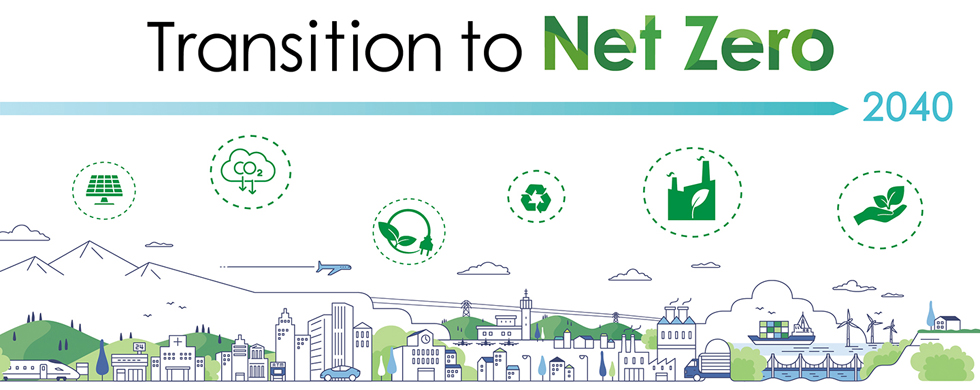
Introduction
From the perspective of sustainability, EIZO identified Materialities (important issues) that EIZO should address in FY2021. Among them, we have identified "Supporting a Recycling-Oriented Society", "Respond to Climate Change" and "Supply Chain Management" as our important issues related to environment. As such we have established GHG emission reduction targets not only for our products and services but also for our business activities as a whole, and are striving to achieve these targets.
EIZO conducted a scenario analysis in accordance with the TCFD disclosure framework In May 2022 to identify and disclose the Risks/Opportunities that our business faces due to climate change. Furthermore, in July 2022, our near-term science-based GHG emissions reduction targets were approved by the SBTi. I response to the Risks/Opportunities identified through the scenario analysis, we recognized the importance of setting highly ambitious reduction targets to help keep global the temperature rise below 1.5˚C compared to pre-industrial levels, and have therefore now established a "Transition to Net Zero". In this plan, we will organize our existing efforts and future plans, and work to realize a low-carbon society throughout our value chain to achieve Net Zero in 2040.
EIZO provide products and services globally to more than 130 countries around the world. Also, we have established a global supply chain for procurement. Therefore, we are committed to reducing GHG emissions of Scope 1, 2, and 3 in all of our Japanese and overseas business activities on a global basis.
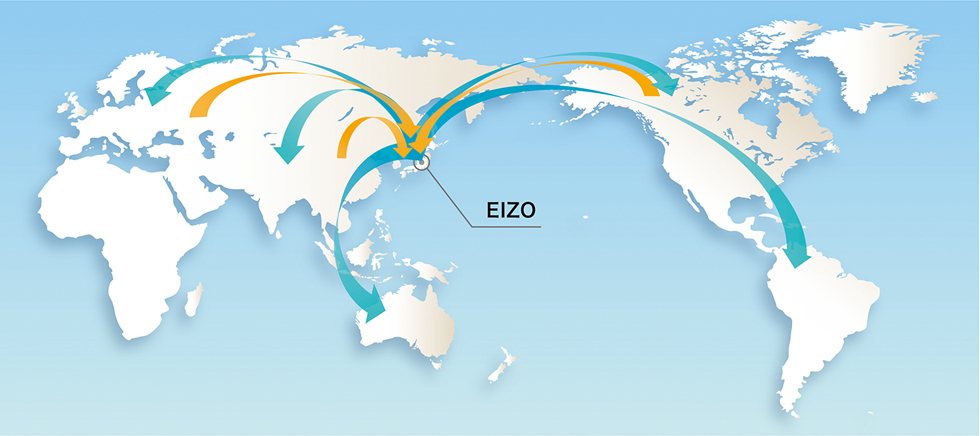
EIZO Group GHG Emission Reduction Targets
- FY2030
- Scope 1+2
- Reduce absolute scope 1 and 2 GHG emissions by 70% by FY2030 compared to the FY2019 base year
Scope 3
- Reduce absolute scope 3 GHG by 27.5 % by FY2030 compared to the FY2019 base year - FY2040
- Scope 1+2
- Reduce Scope 1 and 2 GHG emissions to Net Zero
Scope 3
- Aim for Net Zero GHG emissions in Scope 3 in cooperation with stakeholders
EIZO Group GHG Emissions Overview
The GHG categories related to our value chain are as follows. We will promote proactive efforts to reduce not only our own emissions (Scope 1 and 2), but also all emissions in the value chain (Scope 3).
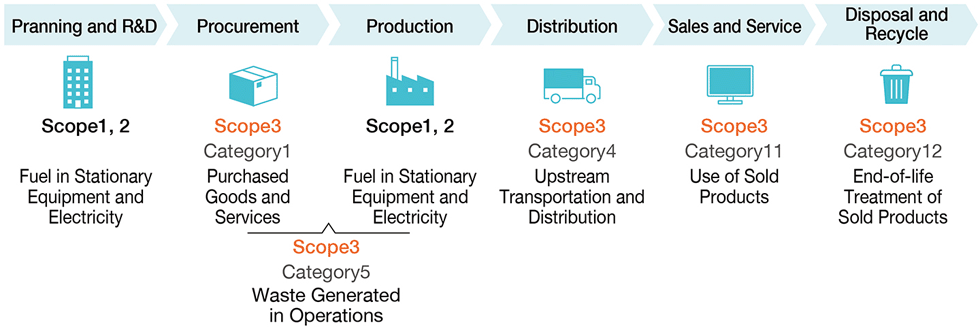
The breakdown of GHG emissions in Scope 1 to 3 is as follows, with Scope 3 accounting for 99%, and we will further promote reductions in Scope 3, which will lead to a reduction in our overall GHG emissions.
GHG Emissions in Scopes 1, 2, and 3 (FY2022)
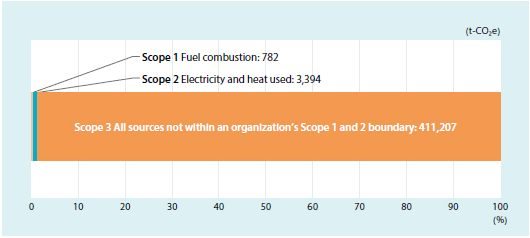
The breakdown of emissions for each category in Scope 3 is as follows. Category 1 and Category 11 account for 93.5% of the total Scope 3 emissions.
GHG Emissions by Category in Scope 3 (FY2022)
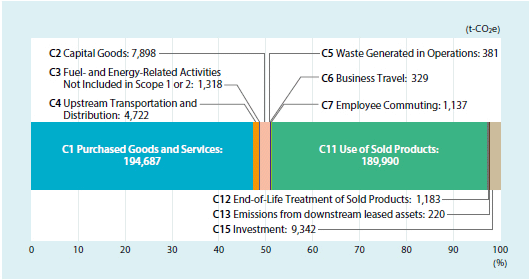
Efforts in the Value Chain
Toward Scope 3 Reductions
The reduction targets for each category of Scope 3 are as follows.
| Category | Reduction Target | Year of Achievement | Remarks |
|---|---|---|---|
| Category 1 | - 27.5% | FY2030 | Science Based Targets |
| Category 11 | |||
| Category 4 | - 25.0% | Our own Targets | |
| Category 12 |
C1: Purchased Goods and Services C11: Use of Sold Products C4: Upstream Transportation and Distribution C12: End-of-Life Treatment of Sold Products
Scope 3 Net Zero Roadmap
The Roadmap toward Scope 3 GHG emission reduction targets is as follows.
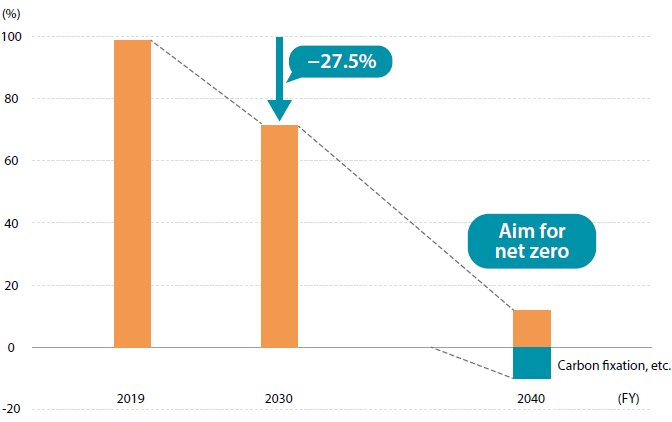
Specific GHG reduction initiatives in each category are as follows.

*EPEAT standard
C1: Purchased Goods and Services C11: Use of Solid Products C4: Upstream Transportation and Distribution
Category 1 Reduction Plan
- Conduct GHG emissions survey and request reductions through supplier engagement
- Category 1 calculations reflecting annual GHG reduction results at suppliers
- Adoption of low environmental impact materials (Green Materials)
Category 11 Reduction Plan
- Further reduction of power consumption through the development of display systems and power-saving functions
- Pursue power-saving design of display systems (display circuits, power supply circuits, etc.) to the utmost limit
- Review each device to achieve a more energy-efficient system configuration
- Achieve both optimal display and power saving by our unique power-saving functionality, and continuously improve performance
Category 4 Reduction Plan
- Advance lightweight and compact products (Green Design)
- Improve product loading efficiency
- Promote Modal Shift, such as switching from trucks to rail for transportation to distant areas

Category 12 Reduction Plan
- Adoption of low environmental impact materials (Green Materials)
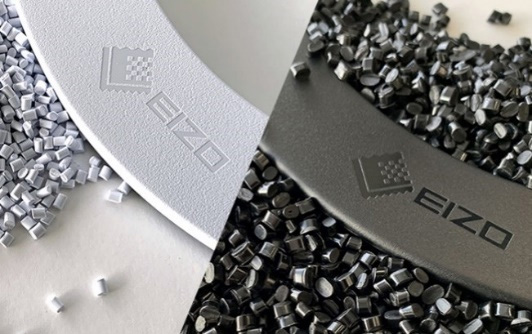
Toward Customer Engagement
Calculation and Disclosure of Carbon Footprint (CFP)
The CFP calculation clarifies the GHG emission rate for the entire value chain and allows us to define GHG reduction targets for each category. CFP will lead to Customer Engagement. In addition, we will begin offering products with carbon offsets based on the CFP.
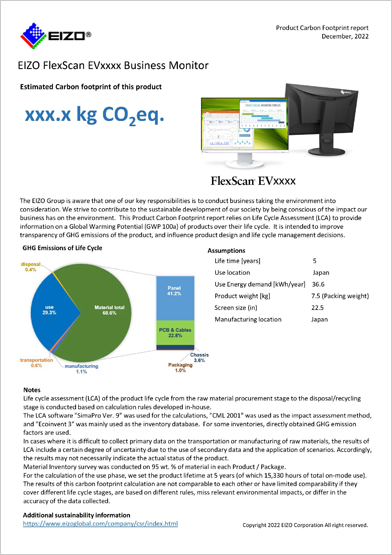
Introduction of "Environmentally Friendly Booths"
We promote the introduction of 'Sustainable Booths' at major exhibitions. In addition, we will begin offering products with carbon offsets based on the CFP.
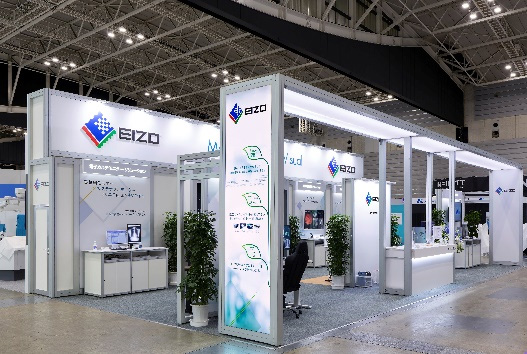
Toward Scope 1 and 2 Reductions
Scope 1 and 2 Net Zero Roadmap
The Roadmap toward Scope 1 and 2 GHG emission reduction targets is as follows.

In FY2022, Group-wide emissions increased by 274 t-CO2e due to the relocation and increase in the total floor space of the office of the U.S. Group company EIZO Rugged Solutions Inc. We will work to achieve the planned figures in FY2023 and beyond by promoting energy conservation and renewable energy at this business site and throughout the Group.
Renewable Energy Installation Plan
By 2040, we aim to achieve 100% renewable energy.
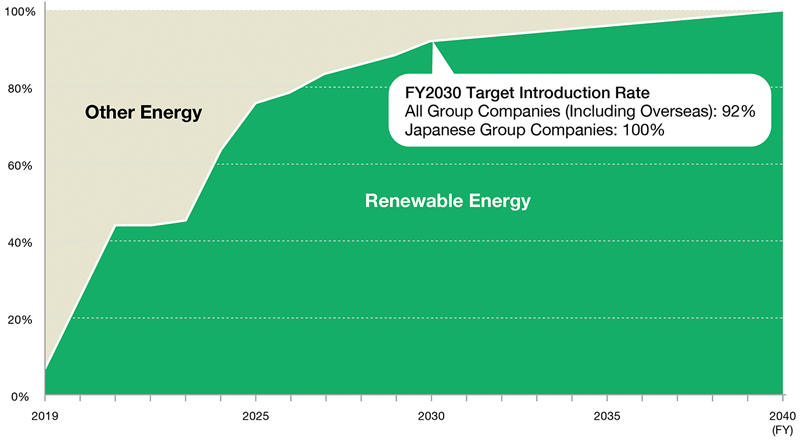
*Percentage of electricity generated from renewable energy sources: 46% (as of March 31, 2023)
Scope 1 and 2 Reduction Plan
- 2022 Introduced solar power in the head office logistics building
- 2023 Introduced solar energy in a German Group company
- 2024 100% renewable energy at the head office
- Introduce solar power at the Hakui factory
- Introduce solar power in a new building
- 2025 100% renewable energy at the Hakui factory
- 2026 100% renewable energy at the Nanao factory
- Electrify heat source for head office air conditioning
- Introduce solar power in the head office parking lot
- By 2030 Convert to renewable energy at domestic bases
- Convert Japanese company-owned vehicles to EVs
- By 2040 Convert gas and heat of overseas Group companies to renewable energy, etc.
Investment Plan in environment-related facilities by FY2030: JPY 3,000M
Example of capital investment: Installation of solar power generation equipment
-
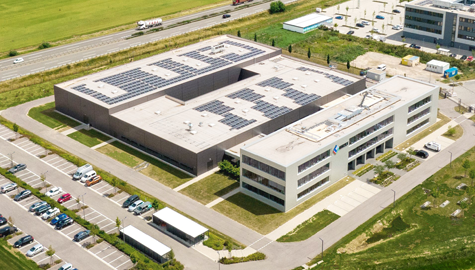
EIZO GmbH (Germany, FY2022) -

EIZO Corporation Logistics Building (Japan, FY2022)
Relationship with Governance
A Sustainability Committee has been established to address issues related to climate change. In addition, the Climate Change Response Subcommittee has been established to evaluate and respond to climate-related risks and opportunities bacause of their specialized characteristics. "Transition to Net Zero" is also discussed by the Sustainability Committee and reported to the Board of Directors. They monitor and oversee progress.
Sustainability Management Structure
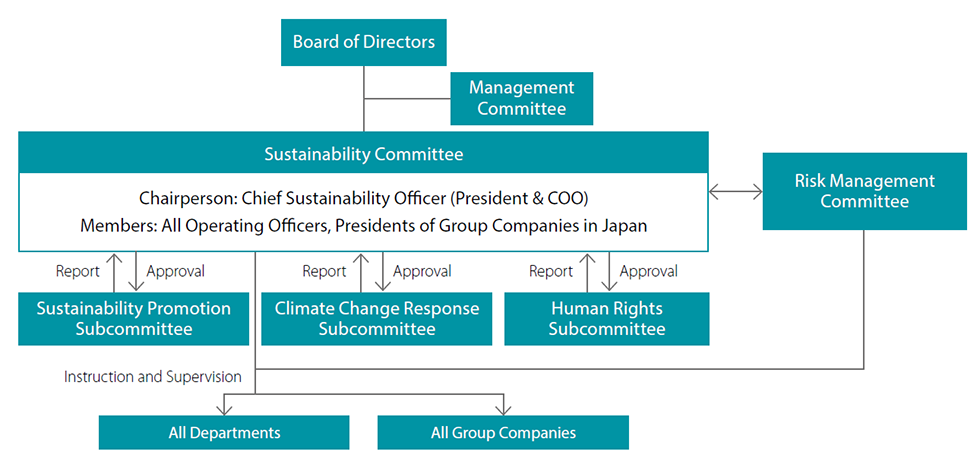
The relevance of climate change-related risk management processes and Transition to Net Zero is as follows.

